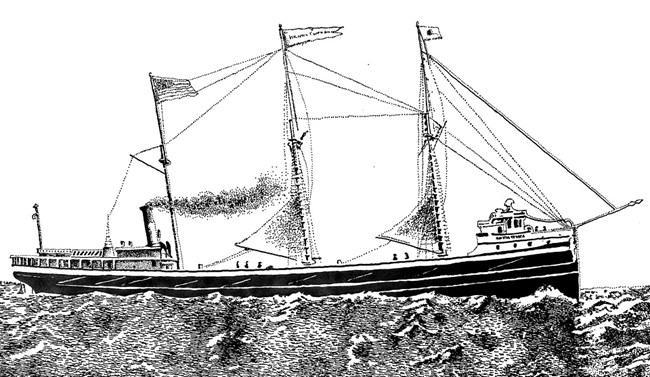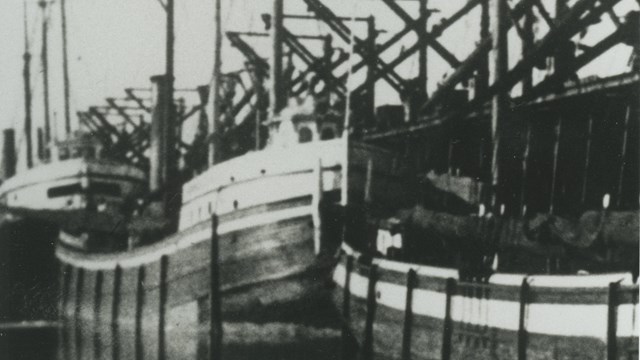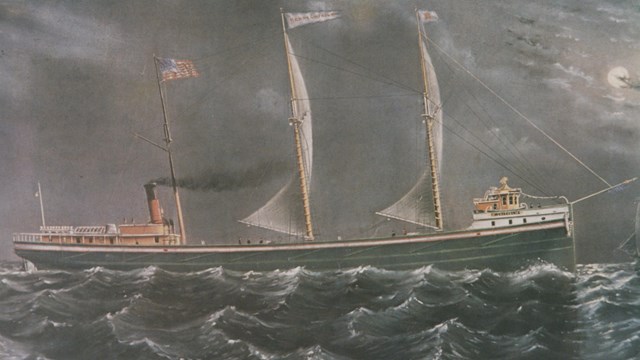
NPS / Historic American Engineering Record IntroductionHenry Chisholm was a wooden bulk freighter with a single screw; it was powered by a fore-and-aft compound steam engine, producing 1,707 horsepower, fed by twin boilers. Chisholm, loaded, could reach 9 knots. The vessel was built close to the end of the era of large wooden vessels as steel was becoming a larger competitor in the boat building business. The vessel was involved in multiple accidents, which was not unusual for bulk freighters in this era. The vessel ran aground on its maiden voyage and a man fell through an open hatch. Vessels were built to maximize space and limitations through canals; this sometimes made for difficult navigation. The vessel was primarily involved in coal, iron ore, and grain trades. The freighter was also involved in towing services for underpower boats. On October 20, 1898, at a speed of 9 knots, Chisholm struck Rock of Ages reef; the vessel was trying to enter Washington Harbor after spending days searching for the missing John Martin. All survived. The vessel quickly broke up and was soon after caught in a northwest gale. The vessel has not been salvaged. Today, a large intact steam engine with drive shaft and prop dominate the scene. A buoy is attached to engine at 125 feet. Large sections of wooden hull are scattered amongst the remains of Cumberland. The Story of the SS Henry Chisholm
Construction
Origin and Original Dimensions 
Operational History
Years of Service 
Wreck Event
Incident and Aftermath Shipwreck SiteMap of Cumberland/Chisholm Site - East View
NPS / J.L Livingston Map of Cumberland/Chisholm Site - West View
NPS / J.L. Livingston Quick Facts
|
Last updated: August 16, 2021
